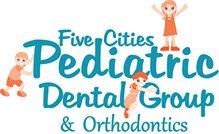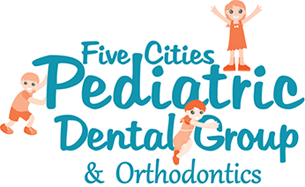Nitrous oxide, or laughing gas, is the most frequently used method for easing mild to moderate anxiety in children. Administered through a small mask that fits over your child’s nose, it is an effective way to calm anxiety. Your child will be asked to breathe through his or her nose and not through their mouth. As the gas enters the lungs, children generally become calmer, although he or she will still be awake and able to talk with the dentist.
At the end of your child’s appointment, he or she will resume breathing regular oxygen, and all the effects of nitrous oxide will disappear. As your child gets older and becomes more comfortable during dental visits, nitrous oxide may not be necessary.
WHAT IS NITROUS OXIDE/OXYGEN?
It is a blend of two gases, oxygen, and nitrous oxide. This mixture is absorbed by the body and has a calming effect (anxiolysis) when inhaled. Nitrous oxide/oxygen is eliminated quickly by the body by normal breathing. The use of nitrous oxide/oxygen is a safe, effective technique to calm a fearful child. In general, when completing dental treatment under nitrous oxide/oxygen, one corner (quadrant) of the mouth is treated per appointment (upper left, lower right, etc.). Nitrous oxide is most effective if introduced at the beginning of an appointment. It is not as effective if introduced halfway through an appointment after the child has been sensitized or is having difficulty coping.
HOW SAFE IS IT?
Nitrous oxide/oxygen is very safe and perhaps the safest sedative used in dentistry. It is non-addictive and quickly eliminated by the body. Your child will maintain all-natural reflexes and be fully conscious.
WHAT DOES BREATHING NITROUS OXIDE/OXYGEN FEEL LIKE?
Your child will smell a sweet aroma and experience a sense of relaxation and well-being. If your child is nervous by the sounds and sensations of dental treatment, the use of nitrous oxide/oxygen may allow for a more positive experience. Nitrous oxide helps to dull sensations that a child may feel in their mouth when treatment is being completed (analgesia). For example, it can make an injection of local anesthesia feel less painful than it otherwise might be. It also helps to suppress a sensitive gag reflex, making treatment easier for the child.
ARE THERE ANY SIDE EFFECTS OF USING NITROUS OXIDE/OXYGEN?
Nitrous oxide/oxygen may irritate the stomach lining, thus occasionally nausea or vomiting may occur when a child has a full stomach. It is recommended that you give your child only a light meal such as a piece of toast and a small cup of juice, or NO food two (2) hours prior to the dental visit. Heavy meals reduce the therapeutic effect of nitrous oxide, increase the chance of vomiting, and are therefore discouraged. Other side effects can include dizziness, disorientation, and sleepiness.
USUALLY, ALL OF THESE SIDE EFFECTS QUICKLY DISAPPEAR ONCE THE DELIVERY OF NITROUS OXIDE/OXYGEN HAS ENDED.
DOES NITROUS OXIDE/OXYGEN WORK FOR ALL CHILDREN?
Pediatric dentists realize that all children are not alike, and treatment is personalized to your child as an individual. For those children with severe anxiety, extensive treatment needs, discomfort wearing a nasal mask, or nasal congestion, nitrous oxide/oxygen may not be effective. We can offer other sedation methods that are better options for your child.


